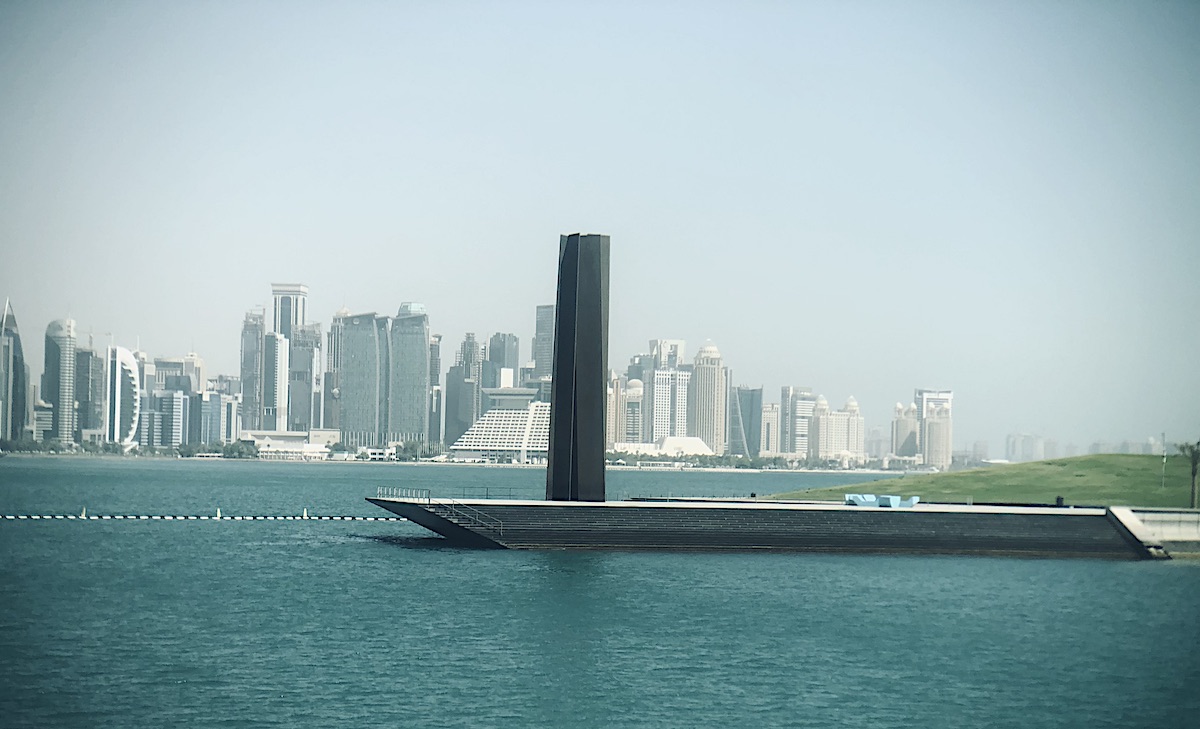When Art Basel plants its flag in Doha next February, it won’t just be adding another fair to its global constellation; it will be marking out a new market for Contemporary Art. Art Basel Qatar marks the fair’s fifth international outpost, and with 87 galleries from 31 countries, it promises to be a statement of intent. Set against the gleaming backdrop of Msheireb Downtown Doha, the event will run from 5 to 7 February 2026 (with preview days on the 3rd and 4th), expanding the Basel brand into a region whose artistic landscape has never looked more vibrant.
Curated under the direction of Egyptian-born artist Wael Shawky, the debut edition breaks decisively from the traditional booth format. Instead, Art Basel Qatar unfolds as a single curatorial organism — an open-format exhibition titled Becoming. Shawky’s concept is a meditation on transformation: how humanity’s systems, rituals, and beliefs shift in tandem with our understanding of the world. The theme threads through two key venues — M7 and the Doha Design District — and extends into public sites across Msheireb, blending institutional ambition with civic imagination.
The decision to appoint Shawky signals a deliberate tilt toward narrative and locality. Known for his rigorous, allegorical practice, he brings a philosophical edge to a fair that might otherwise risk becoming another global shopping window. Here, storytelling takes precedence over spectacle. The idea is to offer galleries and artists a space to converse rather than compete — a curatorial approach that gestures toward a more porous, less transactional art world.
The fair’s regional backbone is strong. More than half of the artists represented are from the Middle East, North Africa, and South Asia, firmly grounding the event in its cultural context. Names such as Etel Adnan, Ali Banisadr, Mona Hatoum, Iman Issa, Meriem Bennani, and Simone Fattal form part of a roster that resists tokenism in favour of genuine representation. Their works — spanning painting, installation, and conceptual practice — will be showcased alongside presentations by established Gulf and Levantine galleries, including Hafez Gallery (Jeddah, Riyadh), Gallery Misr (Cairo), Le Violon Bleu (Tunis), Saleh Barakat Gallery (Beirut), and Tabari Artspace (Dubai).
Doha’s homegrown scene also steps confidently into the frame, with Al Markhiya Gallery presenting Bouthayna Al Muftah and Lawrie Shabibi showing Amir Nour, among others. The inclusion of such galleries — many participating in Art Basel for the first time — underscores the fair’s ambition to consolidate the Gulf as a new cultural axis, rather than a peripheral market.
Still, Art Basel’s gravitational pull ensures heavyweight participation from Europe, the Americas, and Asia. Global powerhouses, including Gagosian, Hauser & Wirth, David Zwirner, White Cube, Pace, and Acquavella Galleries, will share the floor with regional stalwarts. The juxtaposition is deliberate: Doha’s emergence as a nexus for cultural exchange depends as much on dialogue as on prestige.
Art Basel’s Director Noah Horowitz positions the venture as a “catalyst for cultural exchange and market growth,” a statement that aligns with the organisation’s broader commitment to establishing Doha as a nexus for both capital and critical discourse. Echoing this sentiment, Chief Artistic Officer Vincenzo de Bellis reports an “exceptional” reception, noting the significant blend of returning and debut exhibitors as a marker of its widening resonance. Yet the ultimate ambition—to move beyond the fair’s inherent commercial imperative—rests squarely upon the curatorial intelligence Sharifah AlShawky brings to the project.
“The theme Becoming is a meditation on change,” Shawky notes, “on how humanity reshapes the ways we live, believe, and create meaning.” In the Gulf, where oral traditions meet digital futures and ancient trade routes are reimagined as circuits of culture, that idea resonates acutely. His vision situates art not as a mirror of transformation, but as its active agent.
Art Basel Qatar arrives at a moment when the art world’s centre of gravity is shifting eastward. By merging market infrastructure with a curatorial framework rooted in regional storytelling, Doha positions itself as both host and interlocutor. Whether this inaugural edition cements the city’s role as a new art capital or reframes global hierarchies remains to be seen. But one thing is clear: in February 2026, all roads — and flight paths — will lead to Doha.

